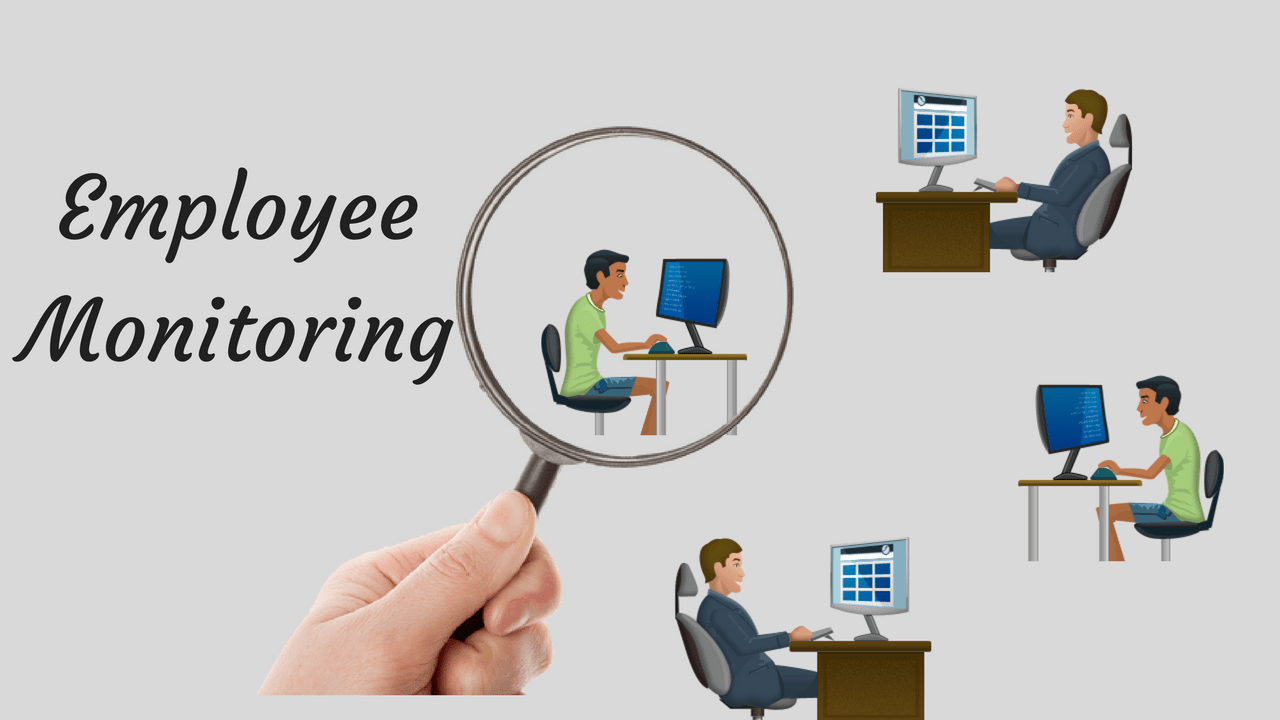Business owners and managers often struggle with a crucial question: how do you keep tabs on employee productivity without crossing ethical lines? The difference between spying and ethical employee monitoring comes down to transparency, purpose, and respect for privacy rights.
This guide is designed for employers, HR professionals, and team leaders who need to monitor workplace activities while maintaining trust and legal compliance. We’ll break down the key differences between invasive spying tactics and legitimate monitoring practices that actually benefit both employers and employees.
You’ll discover how leading employee monitoring apps like TheOneSpy, OgyMogy, and FonSee approach workplace surveillance, plus learn practical strategies for implementing monitoring systems that protect your business without damaging employee relationships. We’ll also cover the essential features that separate professional monitoring tools from privacy-violating spyware, helping you make informed decisions about workplace oversight.
Understanding Spying vs Ethical Employee Monitoring
Defining workplace spying and its invasive characteristics
Workplace spying crosses ethical boundaries by secretly monitoring employees without their knowledge or consent. This invasive approach often involves hidden cameras, keystroke loggers, and covert tracking systems that violate personal privacy. Spying typically lacks transparency and operates under the assumption that employees cannot be trusted.
Core principles of ethical employee monitoring
Ethical monitoring builds on transparency, consent, and clear business justification. Companies openly communicate their monitoring policies and explain how data collection improves productivity and security. The focus remains on work-related activities rather than personal behavior, creating a balance between oversight and respect for employee dignity.
Legal boundaries that separate acceptable monitoring from privacy violations
- Disclosed monitoring policies that clearly outline what gets tracked
- Business-related justification for all monitoring activities
- Reasonable scope that doesn’t extend to personal communications
- Data protection compliance with local privacy regulations
- Limited access to monitoring data by authorized personnel only
Employee consent and transparency requirements
- Written acknowledgment of monitoring policies during onboarding
- Regular updates when monitoring practices change
- Clear explanations of data usage and storage
- Opt-out options for non-essential monitoring features
- Open communication channels for employee concerns and questions
Key Differences in Implementation Approaches
Secret surveillance versus openly communicated monitoring policies
Covert monitoring operates without employee knowledge, creating environments of distrust and potential legal complications. Workers remain unaware that their activities are tracked, leading to privacy violations and ethical concerns. Transparent monitoring involves clear policies communicated upfront, establishing expectations, and building workplace trust. Companies openly discuss what’s monitored, why it’s necessary, and how data protects business interests while respecting employee dignity.
Data collection scope and limitations in ethical practices
Ethical monitoring focuses on work-related activities during business hours, avoiding personal communications and private browsing. This approach respects boundaries between professional responsibilities and individual privacy rights. Invasive practices capture personal messages, off-hours activities, and sensitive information unrelated to job performance. Companies implementing ethical standards establish clear data collection boundaries, ensuring monitoring serves legitimate business purposes without overstepping into employees’ personal lives.
Purpose-driven monitoring for productivity vs invasive personal tracking
Productivity-focused monitoring measures work output, project completion rates, and time management during business activities. This approach helps identify training needs, optimize workflows, and support employee development. Personal tracking extends beyond work-related metrics, monitoring social media usage, personal communications, and location data outside work contexts. Ethical companies distinguish between performance measurement tools that enhance workplace efficiency and surveillance tactics that invade personal privacy without business justification.
TheOneSpy Employee Monitoring Features and Capabilities
Real-time activity tracking and screen monitoring tools
TheOneSpy delivers comprehensive workplace oversight through advanced screen capture technology and live activity monitoring. Managers can view employee screens remotely, track active applications, and monitor productivity levels across teams. The platform captures screenshots at customizable intervals and provides detailed reports on work patterns, helping organizations identify productivity bottlenecks and optimize workflow efficiency.
Communication monitoring across multiple platforms
The software tracks communications across email, instant messaging, social media, and VoIP calls, giving employers complete visibility into workplace interactions. TheOneSpy monitors popular platforms like WhatsApp, Skype, Facebook Messenger, and Gmail, ensuring comprehensive coverage of digital communications while maintaining detailed logs for compliance and security purposes.
Location tracking and geofencing functionality
GPS tracking capabilities enable real-time location monitoring for field employees and remote workers. The geofencing feature automatically alerts managers when employees enter or exit designated work areas, making it invaluable for companies with mobile workforces. Location data integrates with timesheet management, providing accurate records of employee presence at job sites.
Keystroke logging and application usage analytics
Advanced keylogger functionality captures all typed content, including passwords and sensitive data, while application monitoring tracks software usage patterns. The system generates detailed analytics showing time spent in specific programs, website visits, and overall computer usage statistics, enabling data-driven decisions about software licensing and productivity optimization strategies.
OgyMogy Platform Analysis and Performance Benefits
Comprehensive device monitoring across smartphones and computers
OgyMogy delivers robust cross-platform monitoring that works seamlessly across Android, iOS, Windows, and Mac devices. The platform tracks everything from GPS location and browsing history to installed applications and file transfers. Real-time alerts keep managers informed about suspicious activities, while detailed reports provide insights into employee productivity patterns and potential security risks.
Social media and messaging app surveillance features
The platform captures conversations from popular messaging apps including WhatsApp, Facebook Messenger, Telegram, and Snapchat. Screenshots and keystroke logging reveal social media interactions that might compromise company data or violate workplace policies. Advanced filtering options help administrators focus on specific platforms or keywords that matter most to their organization’s security needs.
Call recording and audio monitoring capabilities
OgyMogy’s call recording feature captures both incoming and outgoing phone conversations with crystal-clear audio quality. The ambient listening tool allows remote activation of device microphones to monitor workplace environments. Voice-to-text transcription converts recordings into searchable text, making it easier to identify compliance violations or inappropriate discussions during work hours.
FonSee Monitoring Solution Review and Advantages
User-friendly dashboard and reporting system
FonSee delivers a clean, intuitive dashboard that makes employee monitoring straightforward for managers of all technical levels. The reporting system generates detailed analytics on productivity metrics, application usage, and website visits through customizable reports. Users can set up automated report scheduling to receive regular insights via email, while real-time notifications keep supervisors informed of policy violations or unusual activity patterns.
Remote device control and management features
The platform enables comprehensive remote management capabilities, allowing administrators to control device settings, install or remove applications, and configure security policies from anywhere. FonSee supports remote screen sharing, file transfer, and system diagnostics without requiring physical access to monitored devices. GPS tracking and geofencing features help organizations manage field employees while ensuring company devices remain secure and compliant with usage policies.
Stealth mode operation and installation process
FonSee operates completely invisibly on target devices, running background processes without alerting users to its presence. The installation process takes just minutes and doesn’t require technical expertise, making deployment across large organizations efficient. Once installed, the software consumes minimal system resources while maintaining continuous monitoring capabilities. The stealth functionality ensures natural employee behavior patterns remain intact for accurate productivity assessments.
Multi-device monitoring from single control panel
Organizations can monitor unlimited devices across different operating systems through one centralized control panel. FonSee supports Windows, Mac, Android, and iOS devices, providing consistent monitoring capabilities regardless of hardware preferences. The unified dashboard displays all monitored endpoints with filtering options by department, location, or device type. Cross-platform compatibility eliminates the need for multiple monitoring solutions, reducing costs and simplifying IT management workflows.
Implementing Ethical Monitoring Practices in Your Organization
Establishing Clear Monitoring Policies and Employee Agreements
Draft comprehensive monitoring policies that outline exactly what activities will be tracked and why. Share these policies with employees before implementation and require written consent. Include specific details about data collection methods, storage duration, and who has access to monitoring information. Regular policy updates keep everyone informed about changes and maintain trust between management and staff.
Balancing Productivity Tracking with Employee Privacy Rights
Respect employee privacy by monitoring only work-related activities during business hours. Avoid tracking personal communications, browsing habits during breaks, or accessing private files. Focus monitoring efforts on productivity metrics, project completion rates, and work quality rather than micromanaging every keystroke. Set clear boundaries about what constitutes acceptable monitoring practices while still achieving business objectives.
Creating Accountability Measures and Regular Policy Reviews
- Schedule quarterly reviews of monitoring policies with HR and legal teams
- Establish employee feedback channels for monitoring concerns
- Document all monitoring activities and maintain audit trails
- Create escalation procedures for policy violations
- Provide regular training sessions on ethical monitoring practices
- Implement anonymous reporting systems for monitoring abuse
Review monitoring data usage patterns monthly to prevent scope creep. Regular policy assessments help identify areas where monitoring practices may overstep boundaries or become ineffective. Keep detailed records of policy changes and employee acknowledgments to demonstrate compliance with privacy regulations.
The line between employee monitoring and workplace spying comes down to transparency, consent, and purpose. Ethical monitoring focuses on protecting company assets and improving productivity while keeping employees informed about what’s being tracked. Tools like TheOneSpy, OgyMogy, and FonSee offer powerful features, but their ethical use depends entirely on how organizations implement them. Clear policies, employee awareness, and focusing on business-relevant data rather than personal information make all the difference.
Before choosing any monitoring solution, take time to develop a comprehensive policy that balances security needs with employee privacy rights. Start with open conversations about why monitoring is necessary and what specific activities will be tracked. The right approach builds trust while protecting your business, creating a workplace where employees understand the rules and feel respected. Remember, the best monitoring strategy is one that your team knows about and supports.

